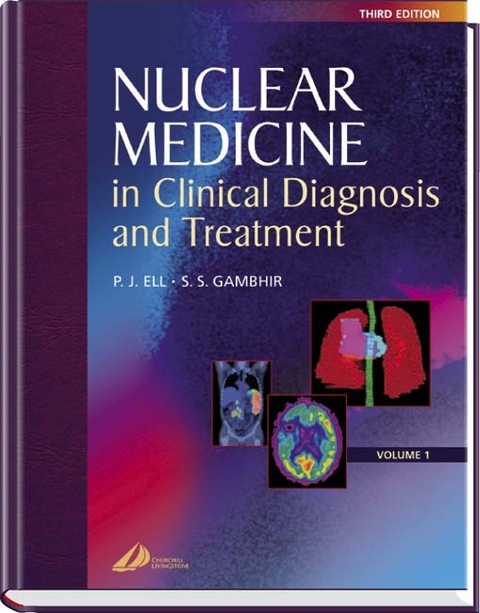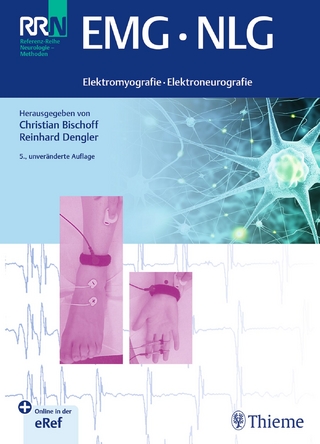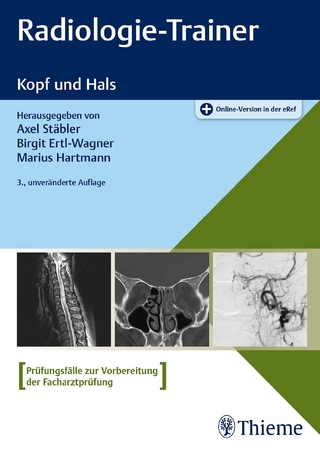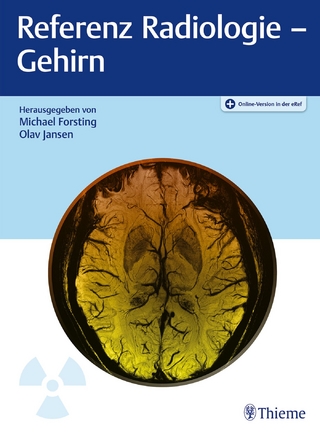
Nuclear Medicine in Clinical Diagnosis and Treatment
Churchill Livingstone (Verlag)
978-0-443-07312-0 (ISBN)
- Titel ist leider vergriffen;
keine Neuauflage - Artikel merken
This definitive and comprehensive 2 volume text-reference book is essential reading for those who are primarily involved in the practice of nuclear medicine. Over 180 contributors, all of them internationally recognized authorities, focus on current and newly available radionuclide techniques and directly apply them to clinical practice. Covering all of the major body systems and organs in which nuclear medicine procedures are used, the book takes a disease oriented approach and this new edition features the latest advances in diagnostic and therapeutic modalities used in the detection and treatment of cancer, heart disease, neurologic disorders, trauma and other common and less common diseases. There are major revisions/ new chapters in the areas of brain imaging, movement disorders, stroke, lymphoma therapy, bone density, non-neurologic drug discovery, molecular imaging, cost/benefit analysis.
Features over 4,400 high quality images depicting a full range of both common and rare diseases and abnormalities.
Emphasizes how to perform and interpret a test rather than the technical aspects of the procedure, and focuses on how to solve the diagnostic problems that occur in day-to-day practice.
Addresses practical considerations such as image interpretation, image optimization techniques, and pitfalls in image acquisition, and interpretation.
Offers state-of-the art global perspectives from an international team of editors and authors.
Provides completely revised and thoroughly up-to-date coverage in every chapter.
Introduces a new co-editor-Dr Sam Gambhir, who provides new perspectives on the field's hottest developments.
Presents expanded coverage of tumor diagnosis and therapy · cardiac nuclear imaging · and radionuclide imaging of neurologic and psychiatric disorders.
Features brand-new chapters on lymphoma therapy · PET imaging · sentinel lymph node biopsy · gated SPECT · multi-modality imaging · molecular imaging · drug discovery · cost/benefit analysis · and bone density.
Incorporates full-color images throughout the text.
Section 1: Nuclear medicine in tumor diagnosis and therapy
Part A: Diagnosis
1.Tumor-seeking radiopharmaceuticals: nature and mechanisms
2Radionuclide imaging of hepatic tumors
3PET in lymphoma and malignant melanoma
4Parathyroid imaging
5Adrenocortical scintigraphy
6Gallium scintigraphy in tumor diagnosis and management
7Thallium-201 chloride: a tumor imaging agent
8MIBG in the diagnosis of neuroendocrine tumors
9Peptide receptor scintigraphy in oncology
10The diagnostic role of radiolabeled antibodies in cancer
11Cancer cell biology basis for nuclear oncology
12Differentiated thyroid carcinoma
13Medullary thyroid cancer
14Breast scintigraphy
15Pediatric tumors
16Functional analysis of cancer therapy effects in other organs
17The use of intraoperative probes in surgical oncology
18The sentinel lymph node in surgical oncology
19FDG PET Imaging of Head and Neck Cancer
20External Beam Radiotherapy Treatment Planning with PET
21PET in aerodigestive tumors
22PET in gynecological tumors (breast, cervical and ovarian)
23Nuclear medicine imaging in pediatric oncology
24Positron Emission Tomography (PET) in genitourinary tumors: prostate, bladder, testicular and renal cancer
25Future clinical applications of PET (amino acid and nucleoside imaging)
26PET imaging of brain tumors
Section 1: Nuclear medicine in tumor diagnosis and therapy
Part B: Radionuclide therapy
27Principles of radionuclide therapy
28Dosimetric and radiobiological considerations: The MIRD concept
29Dosimetric and radiobiological considerations: Patient-individual dosimetry
30Radioiodine therapy of the thyroid: Treatment of benign thyroid diseases
31Radioiodine therapy of the thyroid: Treatment of thyroid malignancies
32Phosphorus-32 therapy in myeloproliferative disorders
33Palliation of bone pain
34Radioimmunotherapy of hematologic neoplasms
35Radioimmunotherapy of solid tumors
36MIBG therapy
37Receptor-targeted radiopeptide therapy
38Use of radiolipiodol in the treatment of hepatic tumours
39Alternative approaches to targeting therapy
40New developments: Nuclear gene therapy
41Atlas 1: PET and PET/CT
42Atlas 2: SPET and SPET/CT
Section 2: Nuclear medicine in disorders of bones and joints
43Bone scintigraphy: the procedure and interpretation
44Evaluation of primary bone tumors
45The evaluation of malignancy: metastatic bone disease
46Assessment of infection
47Radionuclide assessment of the painful joint prosthesis
48Vascular manifestations
49Bone scintigraphy in trauma
50Bone scintigraphy in sports medicine
51Growth and metabolic disorders
52Arthritis: current status of scintigraphy and future trends
53Radiation synovectomy
Section 3: Quantitative studies of gastrointestinal function
54Salivary gland disorders
55Esophageal function (transport and motility)
56Gastric motility
57Intestines: evaluation of absorption
58Studies of small bowel and colonic transit
59Hepatobiliary function: biliary kinetics
60Scintigraphic measurement of hepatic function
Section 4: Nuclear medicine in acute care
61Nuclear cardiology and cardiac transplantation
62Cardiovascular conditions: venous thrombosis
63Pulmonary embolism
64Non-embolic disease of the lungs
65Gastrointestinal bleeding
66Cholescintigraphy
67Neonatal hyperbilirubinemia
68Nuclear medicine in acute care of neurological patients
69Radiolabeled agents for the localization of infection and inflammation
70Undiagnosed fever
71Inflammatory bowel disease
72Nuclear imaging in cardiovascular infection and cardiac transplant rejection
73The immunocompromised patient
Section 5: Nuclear cardiology
74Radiopharmaceuticals for the study of the heart
75Radionuclide ventriculography and the assessment of impaired ventricular function
76Infarct avid imaging and myocardial perfusion scintigraphy techniques using single photon radiotracers
77Cardiac positron emission tomography
78Cardiac stress
79The detection of coronary artery disease
80Assessment of prognosis in patients with known or suspected coronary artery disease
81Assessment after myocardial revascularization
82Assessment of myocardial viability in dysfunctional myocardium
83Myocardial infarction: the assessment of thrombolysis
84Congenital heart disease
85Single-photon imaging of myocardial metabolism: the role of iodine 123 fatty acids and fluorine-18 deoxyglucose
86Clinical applications of PET
87Myocardial innervation: imaging and quantification
88Nuclear medicine techniques in the assessment of human thrombosis and atheroma
Section 6: Nuclear medicine in neurological and psychiatric diagnosis
89The blood-brain barrier
90Lipophilic tracers: the amines
91Lipophilic tracers for the study of regional cerebral blood flow
92Ligands for neuroreceptor imaging by positron or single photon emission tomography
93PET tracers for brain scanning
94Neuroactivation
95Image analysis in brain SPECT and PET
96SPECT brain imaging in cerebrovascular disease
97Nuclear medicine in the management of a patient with epilepsy
98Nuclear medicine and the management of patients with Parkinson's movement disorders
99Anxiety disorders and affective disorders
100Addictions
101The management of patients with schizophrenia
102PET and SPECT imaging in evaluating Alzheimer's disease and related dementias
103Nuclear medicine and drug studies in the brain
104Cerebrospinal fluid physiology, clearance flow studies and cerebrospinal fluid shunt studies
105Atlas 3: PET brain atlas
Section 7: Nuclear medicine in renal disorders
106Overview of renal nuclear medicine
107Radiopharmaceuticals: their intrarenal handling and localization
108Dynamic static renal imaging
109Quantitative evaluation of clearance
110Measurement and interpretation of renal transit times
111The role of PET in renal nuclear medicine
112Renal infection
113Pediatric aspects of radionuclides in nephrourology
114Nuclear medicine in the clinical diagnosis and treatment of obstructive uropathy
115Vascular disorders, with emphasis on hypertension
116Renal failure
117Space-occupying lesions and trauma
118Renal transplant evaluation
119The genital tract
Sction 8: Basic sciences
120Fundamental molecular/cell biology
121Radioisotope production
122Radiochemistry
123Radiopharmacy
124Basic physics and detection of radiation
125Nuclear medicine imaging instrumentation
126Nuclear medicine computers: Basic principles
127Nuclear medicine computers: Applications
128Single photon emission computed tomography (SPECT)
129Positron emission tomography (PET)
130Primer on molecular imaging
131Radiation protection and dosimetry in clinical practice
132Clinical decision making: an introductory, quantitative approach to diagnostic investigations
133ecision analysis fundamentals
| Erscheint lt. Verlag | 15.7.2004 |
|---|---|
| Verlagsort | London |
| Sprache | englisch |
| Themenwelt | Medizinische Fachgebiete ► Radiologie / Bildgebende Verfahren ► Neuroradiologie |
| Medizinische Fachgebiete ► Radiologie / Bildgebende Verfahren ► Nuklearmedizin | |
| Studium ► 2. Studienabschnitt (Klinik) ► Anamnese / Körperliche Untersuchung | |
| ISBN-10 | 0-443-07312-0 / 0443073120 |
| ISBN-13 | 978-0-443-07312-0 / 9780443073120 |
| Zustand | Neuware |
| Haben Sie eine Frage zum Produkt? |
aus dem Bereich


